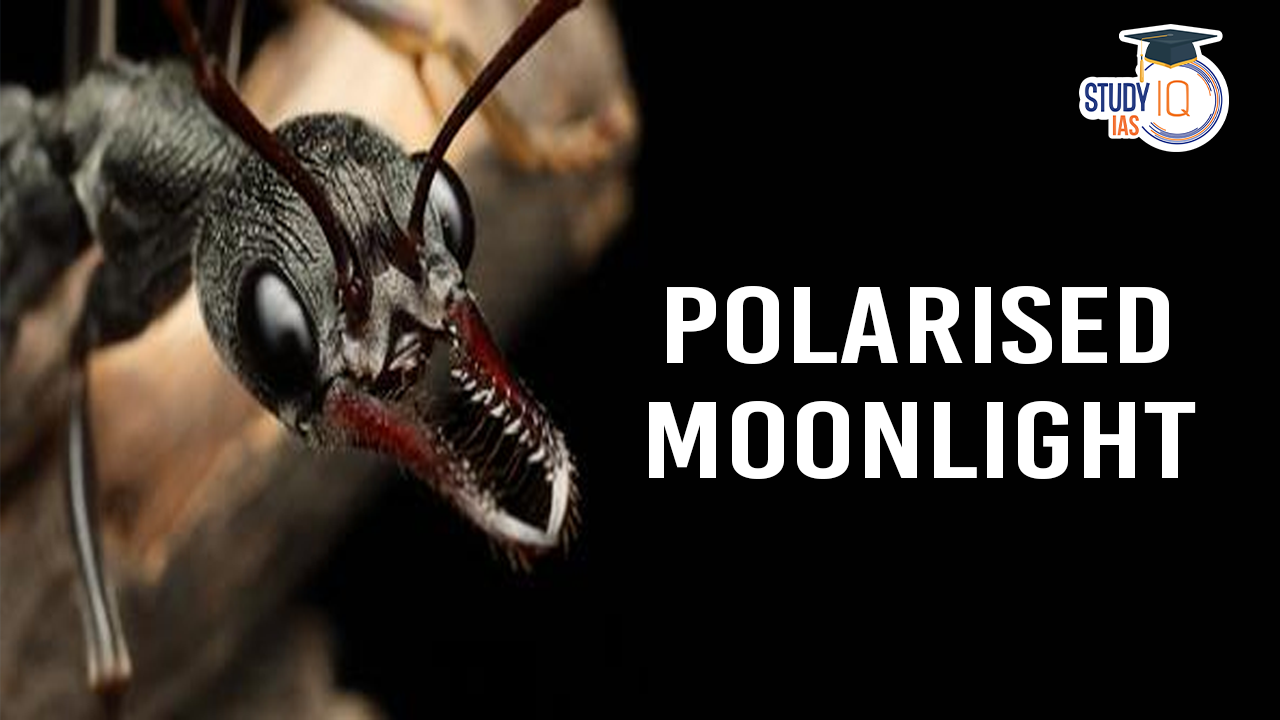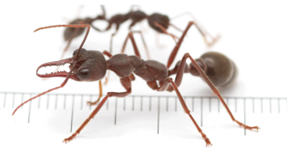Table of Contents
Context: Scientists have discovered that two nocturnal bull ant species, Myrmecia pyriformis and Myrmecia midas, navigate at night using polarised moonlight.
What is Polarised Light?
- Light from the sun and moon normally spreads out in all directions. This is called unpolarised light.
- When this light passes through the Earth’s atmosphere, it scatters and becomes polarised.
- Polarised light means the light waves are organised in a specific direction, creating a pattern in the sky. This pattern is called E-vector pattern.
- Some animals, like ants, can see this pattern and use it like a built-in compass to navigate.
Why is Polarised Light Important for Nocturnal Insects?
- Many insects, like ants and bees, use the moon’s position to move around at night.
- However, the moon isn’t always visible—it changes shape (waxing and waning), gets covered by clouds, or is blocked by trees.
- Polarised moonlight, even though it is much dimmer than sunlight, still creates a pattern in the sky.
- Some insects can detect and follow this pattern, helping them find their way even on dark nights.
How Do Bull Ants Use Polarised Moonlight to Navigate?
- The ant species Myrmecia pyriformis and Myrmecia midas were known to use polarised sunlight to navigate during the day.
- But scientists didn’t know how they found their way at night after sunlight disappeared.
- They noticed that:
- Midas ants returned home late at night.
- pyriformis ants were more active on full-moon nights.
New Discovery
- Scientists found that these ants can see and follow polarised moonlight, just like they use polarised sunlight.
- Even when the moon is very dim (like during a crescent moon, when it’s 80% darker), the ants could still find their way.
- The pattern in moonlight’s polarisation acts like a hidden map, guiding the ants home.



 Advanced Air Defence Radars: Types, Comp...
Advanced Air Defence Radars: Types, Comp...
 Ion Chromatography, Working and Applicat...
Ion Chromatography, Working and Applicat...
 Broadly Neutralising Antibodies (bNAbs):...
Broadly Neutralising Antibodies (bNAbs):...

























